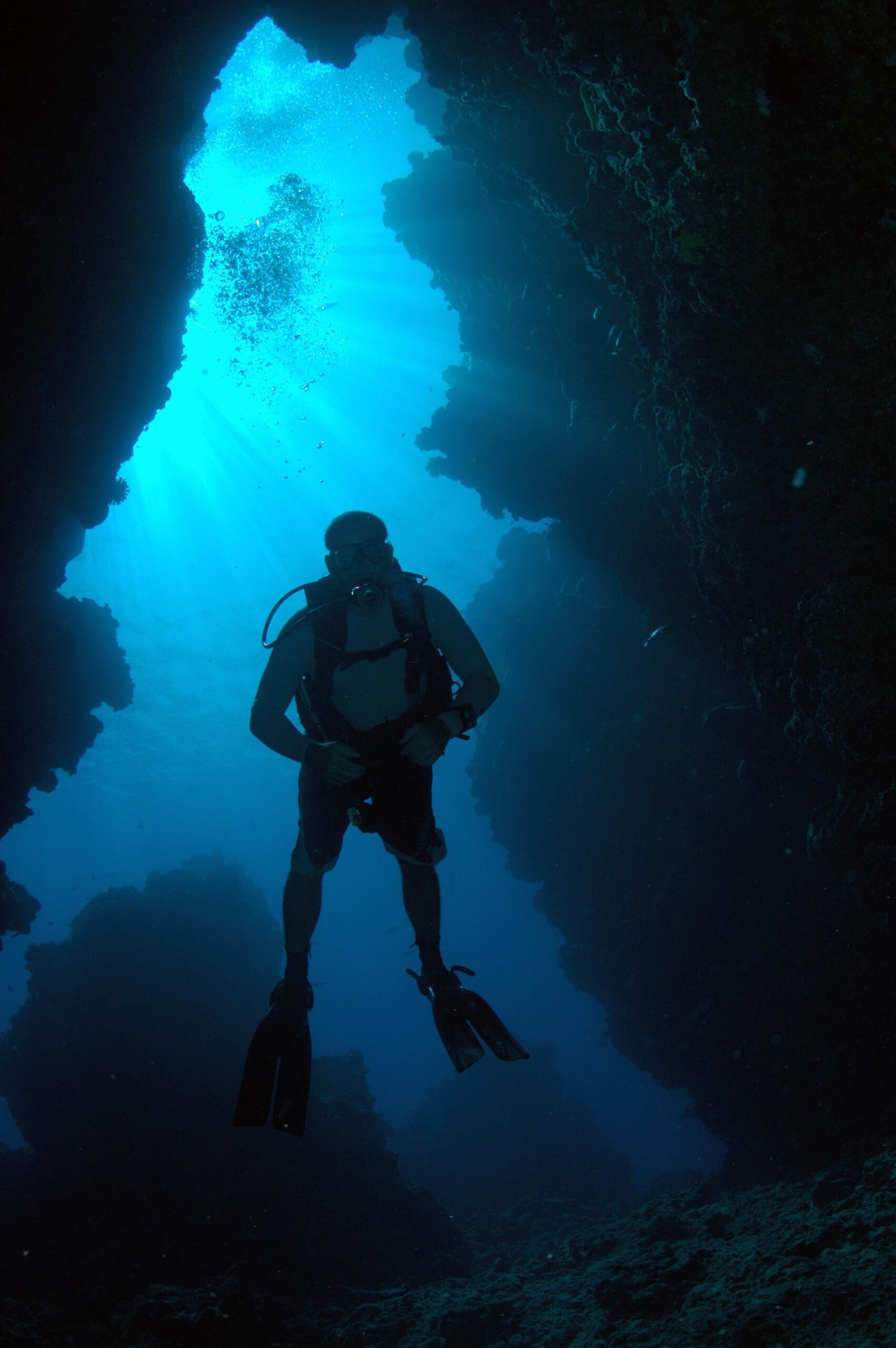RESCUE DIVER TRAINING Nha Trang Vietnam
Diving Vietnam Nha Trang
Participants learn how to perform (CPR) in life-threatening situations. To ensure that participants have the confidence in their capacity to deliver treatment when emergency situations happen, the course’s primary care focus combines knowledge growth, skill development, and realistic scenario practice.
Skills in primary care (CPR) are covered in this course.
Scene evaluation, use of barriers, initial assessment, cardiopulmonary resuscitation (CPR), management of serious bleeding, shock, management of spinal injuries, and management of conscious and unconscious choking.
Recommended Skills
– Automated External Defibrillator (AED) Use
– Emergency Oxygen Use.
Emergency First Aid Injuries or illnesses that are not immediately life threatening are covered by secondary care (first aid). By doing realistic scenario drills, developing their knowledge, and developing their skills, participants concentrate on secondary evaluation and first aid.
Other skills covered in this Course
Injury Assessment
Illness Assessment
Bandaging
Splinting for Dislocations and Fractures
Includes first aid treatment assistance for the following emergencies:
Choking (adult, child, or newborn), Asthma, Bruises, Burns, Chemical Burns, Allergic Reactions (including Anaphylaxis), CPR (adult, child, or infant), Fish spine injury, frostbite, heat exhaustion, heatstroke, heart attack, hypothermia, diabetic issues, dislocations and fractures, electrical injuries, eye injuries, first aid kit assembly, Venomous bites and stings, insect stings, jellyfish stings, poisoning, cuts, seizures, snake bites, spider bites, sprains and strains, and temperature-related injuries.
CPR and First-Aid
With doctors and other qualified professionals available, why is it important for everyday people to learn about CPR and First-Aid? The truth is that, while a high-level medical professional is always the best recourse for a patient in need, it is often the first responders who are able to keep them in stable condition until help arrives. Mark Scott’s Diving VietNam CPR and First-Aid training allows average people to respond to a wide assortment of common, everyday conditions making them an invaluable resource for on-the-spot emergencies.
CPR and First-Aid Certification Course and Training… RESCUE DIVER TRAINING?
Our CPR and First-Aid course Become a HERO TODAY…
Training modules are designed to go as in-depth as possible while still keeping the course FUN and Manageable for ALL. Short Time commitment For SAVING LIVES..
What’s included?
- Good Samaritan Law – Before getting down to the technical aspects of CPR and First-Aid, Diving Vietnam course will explain the legal backing of such service. Make sure to read carefully, and gain a thorough understanding of your rights as a CPR & First-Aid practitioner.
- CPR – Short for Cardiopulmonary Resuscitation, CPR training teaches a particular series of techniques which are designed to assist infants, children, and adults in need. Our helpful hands on performance and additional self watch videos will illustrate the entire process, offering you a complete understanding.
- AED – AED stands for Automated External Defibrillator, which is a device used to resuscitate patients. We will provide thorough videos in person details on how to operate the equipment, and how to handle various emergency situations.
- First-Aid – Think of First-Aid as a complete toolkit to handle all of the most common medical emergencies. The Diving Vietnam course module will introduce you to all of the tools involved and the best way to implement them for patient safety and health. If you want to go more in depth, see our First-Aid certification Instructor course.
- Wounds – Get all of the up-close and personal details you need through our hands on care of wounds. Punctures, cuts, and scrapes of all kinds are covered, informing you how to respond appropriately and without hesitation. Diving Vietnam will explain all of the most common treatments and wound dressings so you are prepared the next time an emergency strikes.
- Heart – Heart attacks, chest pain, and respiratory arrest are all real-life situations that first-responders can expect to encounter at some point in their life. Understand the anatomy of the heart and lungs to learn the proper way to respond when the need arises.
- Fractures – Legs, arms, hands, and just about any other part of your body with bones are susceptible to fractures. However, sprains and torn muscles can be just as severe. Learn how to handle all of these emergencies and more with videos, and clear hands-on instructions.
- Burns – Can you identify the difference between a first-, second-, and third-degree burn just by looking? So, you will be able to, and also know how to act within first-response care. Understand how burns can sink through layers of skin and cause different types of damage.
- Poisoning – There are a wide range of different substances, natural and man-made which can cause stomach-aches, dizziness, vomiting, or even death. In the most serious cases, time is of the essence, making first-responders an indispensable part of the medical community.
- Hemorrhages – From the tiniest scrapes to the most severe wounds, knowing how to disinfect and wrap stop hemorrhaging is one of the most basic and crucial skills in first-responder Training and Care.
- Choking – An especially useful module for parents with kids who love to put anything and everything into their tiny mouths. However, choking is experienced by adults more often than you might guess, meaning CPR & First-Aid certified people are always in high demand.
- Injuries – From an average, everyday black eye to the most dangerous chemical splashes, injuries come in all shapes and sizes. The goal of CPR & First-Aid certification is to prepare you for each and every one of them, so you can approach an emergency situation with care and expertise.
- Shock – Gain a full understanding of all three examinations to determine whether your patient is experiencing a stroke. Seizures and bodily shock are also covered.
CPR WHAT IS IT?
When a person’s heart stops beating, oxygenated blood is no longer circulated through their body to vital organs. They just have 4 minutes before irreversible brain damage happens. CPR works and improves survival rates. Act swiftly if you observe someone collapse. Call out to them and enquire about their well-being. Call ADVANCED HELP in the event they do not respond. Switch the phone to speaker mode. Examine the area to ensure if it is safe to approach. If you are injured, you cannot aid anyone. Check to see whether they are gasping for air or if they have a pulse. CPR is a technique that combines chest compressions with ventilation (mouth to mouth). ventilation inflates the victim’s lungs while chest compressions manually pump the heart when it has stopped.
Movements of CPR Link your fingers together, palms facing out, and place the heel of your hand on the victim’s breastbone to conduct chest compressions. Firmly press down at a rate of 100 to 120 beats per minute. Lifting the victim’s chin with two fingers and breathing into their mouth until their chest rises is how ventilation is conducted. These should be done at a pace of 6 breaths per minute, in addition to regular chest compression.
SERIOUS INJURIES REQUIRING IMMEDIATE CARE TAKE ACTION BE THE HERO SAVE LIVES
FAST
First Aid for Severe Trauma provides participants with the knowledge and skills they need to respond to an emergency involving life-threatening bleeding, including how to recognize a life-threatening bleeding emergency, ensure safety and communicate effectively in an emergency, control life-threatening bleeding using direct pressure, a tourniquet, or both. The course is designed to enhance participants’ ability to take decisive, lifesaving action to assist a person with a traumatic injury and life-threatening bleeding until professional responders arrive or you are able to Transport to Higher Care Facility.
Open Chest Wound
Apply direct pressure to stop bleeding. Use a Non permeable occlusive dressing For open chest wound if possible a Baby Diaper is Ideal. Direct Pressure is applied if the patient is losing a lot of blood. EXTREMELY necessary the first thing to do is call for ADVANCED HELP. Then examine the victim to determine how many wounds will need dressing. Remove any clothing that is in the way of the wounds. Make sure the dressing is slightly larger than the wound so that it will be able to stay on.
Puncture Wounds
If the wound is bleeding excessively. Apply direct pressure until the bleeding slows , call Advanced Help. Then carefully clean the wound with soap and water. After that, wrap the wound in sterile gauze.
Amputations
Call Advanced Help immediately. Administer Direct Pressure Raise the injured limb above the heart to reduce bleeding. If possible clean the amputated body part and give it to an emergency respondent.
Cuts and Scrapes can be Minor or Severe
Stop bleeding by applying direct pressure. If the injury is bleeding excessively or is more than 1/4 of an inch deep, call for Advanced Help. Clean the wound with soap and water and apply an ointment. Then wrap the injury or apply a bandage to prevent infection.

FirstAid CPR Saves Lives Learn Now.
INSTRUCTOR COURSE Scuba Diving First Aid Training CPR.
During the Diving Vietnam Emergency Response Instructor course, you will improve your skills as an emergency responder while also focusing on building your instructional talents so that you may teach these skills to others. The Instructor course prepares you to teach the Emergency First Response Primary Care (CPR), Secondary Care (First Aid), Care for Children, CPR, and AED courses. You will learn to administer Emergency First Response courses using a multi-media strategy of independent study, classroom sessions, and practical teaching assignments working as an assistant to your Instructor Trainer.
The instructor course includes instruction on how to structure learning, the requirements of performance-based training, and your role as the instructor in the learning environment. It also covers specific goals and performance requirements for the Primary Care, Secondary Care, Care for Children, and CPR & AED courses. Additionally, you get instruction on how to effectively encourage students, assess student knowledge, deliver course material, design students’ practise sessions for practical skills, and deliver scenario-based learning experiences.
Prerequisites:
To ensure that you have the necessary experience to deliver a high-quality course, you must be at least 21 years old, have completed CPR and first aid training with Mark Scott’s Diving Vietnam within the last 24 months, or be a working medical professional such as a doctor, emergency medical technician, paramedic, or registered nurse.
CPR & AED Course
It takes between 2.5 to 4 hours to finish this stand-alone CPR and AED training. It includes instruction on CPR and AED use on infants and children as well as one and two rescuer CPR for adults. The programme is intended to satisfy occupational safety compliance requirements. The course materials support a variety of delivery methods, including instructor-led, video-guided, and emergency practice scenario .
Emergency First Aid CPR workplace courses provide a practical, comprehensive, and continuous way to satisfy local workplace compliance requirements for CPR, AED, and First Aid instruction. Adult, child, and infant CPR and first aid skills are covered in Emergency Diving Vietnam classes, along with instruction on using an AED and emergency oxygen. The design of the courses is adaptable to meet scheduling.

Become a Hero Save Lives Learn CPR First Aid NOW..
